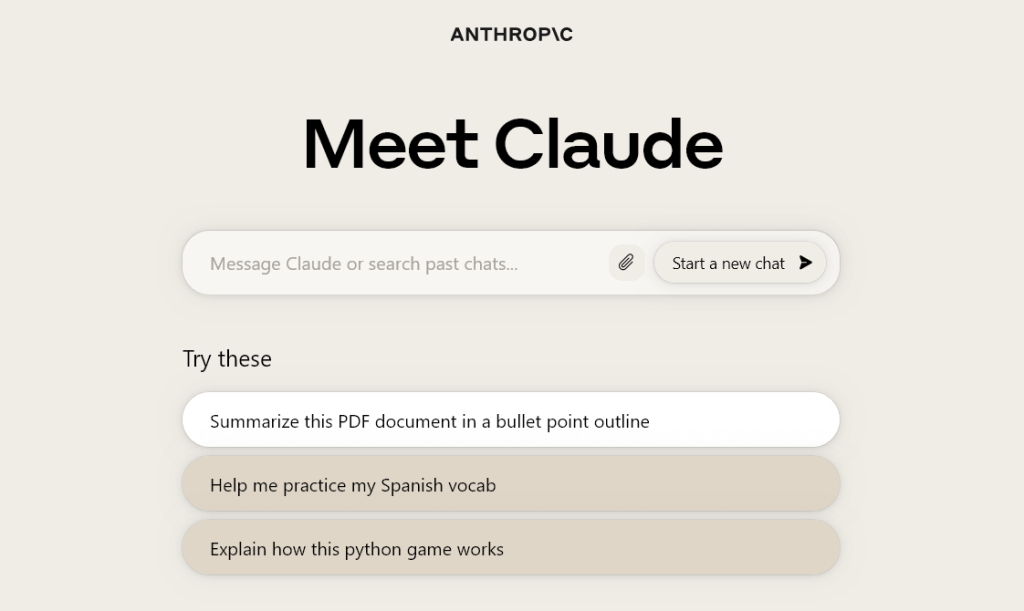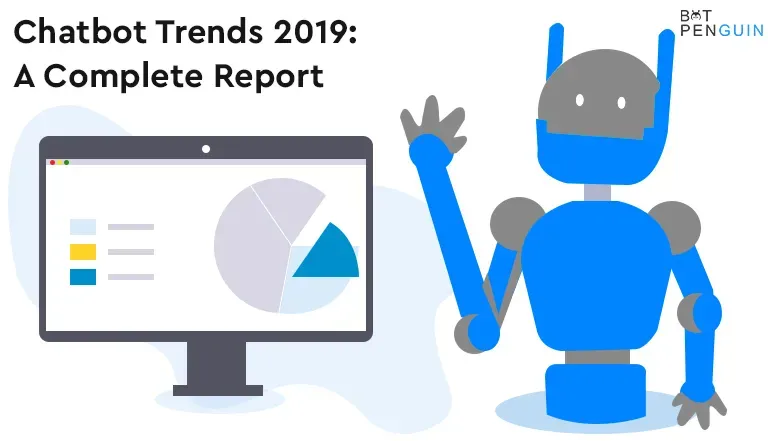Introduction
Are you ready to take your business to the next level by incorporating Claude AI? You've come to the right location!
Incorporating AI into company processes, it has been shown, can boost output by 40%, cut down on mistakes by 30%, and speed up reaction times by 20%. (Source: Statistica)
Modern artificial intelligence called Claude AI seeks to make your life easier. With Claude AI, you get a virtual assistant that can perform various tasks, from scheduling appointments and sending emails to making restaurant reservations and even providing recommendations for movies and books.
That's a lot of benefits rolled into one! We'll show you exactly how to utilize Claude AI in this step-by-step manual so you can reap its advantages. So let's get started right away!
How to Use Claude AI: A Step-By-Step Guide
Claude AI is a powerful tool that can help boost productivity, automate tasks, and more. In this section, we'll walk you through the basics of using Claude AI. Let's get started!

The Dashboard of Claude Generative AI
First things first, let's explore the dashboard. You'll find all your workspaces, projects, and tasks here. It's also where you'll access all the settings and configurations for Claude AI.
In the dashboard, you can add new workspaces, create projects, and monitor the progress of tasks. You may also assign team members particular responsibilities and invite them to cooperate with you.
Creating a Project at Claude Generative AI
Now that you're familiar with the dashboard, let's create a project.
Click on the workspace where you want to create a project. Then, click on the "New Project" button.
Give your project a name, assign a team, and add a description. You can also set goals and deadlines for your project.
Once you've created your project, you'll see it appear on your dashboard. Under the project name, you can view a summary of its current status, including progress, goals, and deadlines.
Importing Data from Claude Generative AI
Now that your project is set up, it's time to import data. Claude AI makes data importing a breeze.
You can import data from your device, Google Drive, or Dropbox. Choose the file you want to import, and voila! Your data is now in Claude AI.
You can import various data types, including text, images, and audio. Claude AI will analyze the data to extract insights, identify patterns, and make recommendations.
Analyzing Data with Claude AI
With Claude generative ai, data analysis may be a breeze. Data analysis can be a difficult undertaking.
Using this AI tool, you may explore, develop, assess, and deploy models for helpful analysis. Here is a tutorial to teach you how to use Claude AI for data analysis:
Data Exploration with Claude Generative AI
The first step to analyzing data is exploring it. Claude generative ai lets you import data from various sources, including text, images, and audio. Once you've imported your data, you can analyze it using the Data Explorer tool.
The Data Explorer tool provides an easy-to-use interface that lets you easily navigate your data. You can visualize your data, filter it, and sort it to gain insights.
Building Models with Claude Generative AI
With Claude AI's Model Builder tool, you can build complex models for analysis. This tool uses machine learning algorithms to extract insights from your data.
The Model Builder tool has a drag-and-drop interface that allows you to create models without writing a single line of code.
You can choose from various machine learning algorithms, such as regression, classification, and clustering.
Model Evaluation with Claude Generative AI
Now that you've built your model, it's time to evaluate it. Claude AI's Model Evaluator tool lets you test your model and determine its accuracy.
You can use the Model Evaluator tool to train your model on a portion of your data and test the accuracy of the remaining data. This tool helps you identify where your model needs improvement and fine-tune it.
Model Deployment with Claude Generative AI
Once you've built and evaluated your model, it's time to deploy it in the real world. Claude AI provides the Model Deployment tool, which lets you deploy your model in various ways, including as a web app or an API.
The Model Deployment tool provides a user-friendly interface that makes it easy to deploy your model. You can also share your model with others by creating a shareable link.
Advanced Features of Claude AI
In this section, you’ll find the advanced features of Claude AI:
Customizing Workflows
With Claude AI, you can customize your workflows to fit your unique needs.
The Workflow Customizer tool allows you to create personalized workflows that automate tasks and streamline your work process.
You can create a series of tasks, define dependencies between them, and set triggers and conditions for each task. This feature ensures that your data analysis progresses seamlessly, helping you save time and effort.
Task Dependencies
Task dependencies keep your workflow organized and ensure that tasks are executed in the right order.
Claude AI allows you to easily set up dependencies between tasks, making your workflow more efficient and error-free.
Triggers and Conditions
Triggers and conditions add flexibility to your workflows. You can define actions to be triggered automatically based on specific events or conditions.
You may, for instance, put up a need to halt a job if particular requirements are not satisfied or set off an email message when a task is finished.
Suggested Reading:
Claude vs ChatGPT: Who Wins the AI Battle?
Collaborating with Team Members
Data analysis is often a team effort, and Claude AI makes collaboration a breeze.
With its collaborative features, you can invite team members to work together, assign roles and permissions, and track progress.
Team Invitations
Within Claude AI, you may invite team members to work with you on your projects.
They can join your workplace with a few clicks once you ask them. Data analysis is now collaborative since everyone can work together without issues.
Roles and Permissions
Claude generative ai allows you to assign different roles and permissions to your team members.
Whether it's granting read-only access, editing privileges, or administrative roles, you have complete control over who can do what within your projects. This ensures that your data remains secure and accessible only to authorized personnel.
Suggested Reading:
Claude AI Chatbot: Transforming Conversational Experiences
Monitoring and Maintaining Models
Once you've built and deployed your models, Claude AI provides powerful tools to help you monitor and maintain them for optimal performance.
Model Monitoring
The Model Monitoring tool helps you keep an eye on the performance of your deployed models.
You can monitor various metrics, such as accuracy, precision, and recall, to ensure your models perform as expected. If any issues arise, you can take immediate action to rectify them and fine-tune your models for better results.
Model Maintenance
Models require regular maintenance to ensure they stay relevant and accurate.
Claude AI's Model Maintenance tool simplifies this process by providing automated alerts and recommendations for model updates. You can easily implement these updates to keep your models up-to-date and effectively solve real-world problems.
Conclusion
There you have it! You've made it through our step-by-step guide on how to use Claude AI for your data analysis needs. We hope you found this guide helpful in unlocking the full potential of Claude AI and harnessing the power of data analysis.
As we wrap up, let's look at some statistics. According to a MarketsandMarkets study, data analysis is one of the fastest-growing job categories in the world, with a projected growth rate of 19% over the next decade.
With such immense potential in data analysis, mastering Claude AI puts you one step ahead in realizing your professional and personal goals.
Claude AI has your back with advanced features that will supercharge your productivity. The features of Claude generative ai: customizing workflows, collaborating with team members, and monitoring and maintaining models assists users in earning greater productivity.
So go ahead with Claude AI for your business today.
Frequently Asked Questions (FAQs)
How do I set up Claude AI on my mobile device?
Install the Claude AI app in the app store, launch it, and follow the on-screen prompts to establish an account to install Claude AI on your mobile device.
You may utilize Claude AI's features and functions after setting them up.
Can I customize Claude AI's settings and preferences?
Yes, you can customize Claude AI's settings and preferences. Within the app, navigate to the settings menu to adjust options such as language, voice, notifications, and privacy settings according to your preferences.
How can I use Claude AI to schedule appointments and set reminders?
To schedule appointments and set reminders with Claude AI, activate the voice command feature or use the in-app interface to specify the details, such as the date, time, and description of the appointment or reminder. Claude AI will then store and remind you accordingly.
Can Claude AI integrate with other productivity tools or apps?
Yes, Claude AI can integrate with other productivity tools and apps. Explore the app's integrations menu to connect Claude AI with calendars, to-do lists, and task management applications, allowing for seamless synchronization and organization of your tasks and activities.
How do I troubleshoot common issues with Claude AI?
If you encounter common issues with Claude AI, such as connection problems or unresponsiveness, try closing and reopening the app, restarting your device, or checking your internet connection. If the problem persists, consult the app's help section or contact customer support.


